Memories! This word includes almost everything that has happened in our ongoing life in the Universe. “Memories are Strengths, Memories are Weaknesses!” (Not that I’m being emotional; it’s just a way of transitioning! 😉) For the sake of satisfying our needs, we created Digital cameras that would capture our most precious memories. Pictures are the most integral part of someone’s memories. A hazy picture may lead to false memories or false perceptions. Analogous to this, a distorted picture of the Universe hinders any chance of our understanding of the Cosmos.
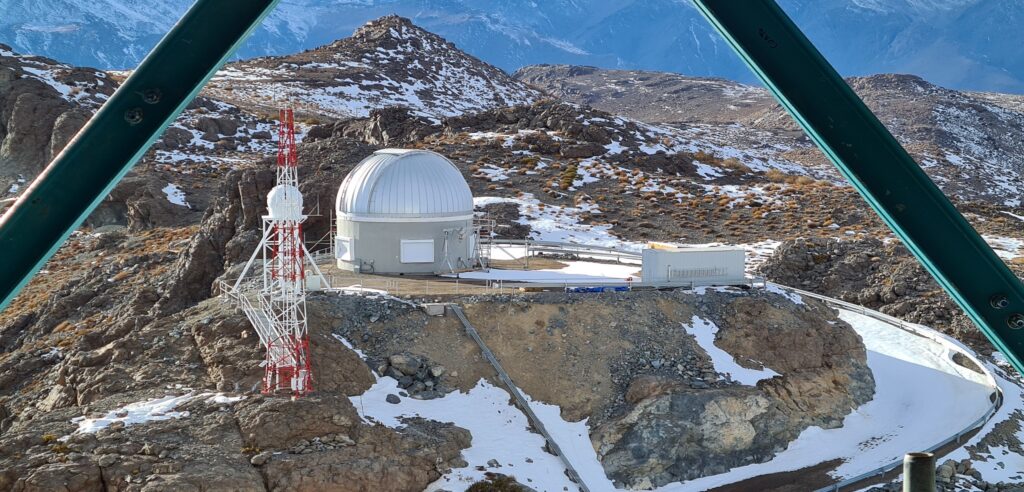
Thus, Ground-based and Sky-based observatories were invented to capture the astounding data showered upon us by vast Space. While many telescopes have been designed to serve the purpose, resolution plays a vital role in forming theory and laws about the Cosmos. To tackle this problem, the SLAC National Accelerator Lab is constructing the World’s Largest Digital Camera, ‘LSST camera’ which will be mounted on the ‘Simonyi Survey Telescope’. Nicknamed “Vera.C.Rubin Observatory” after the American astronomer and pioneer Vera Rubin who discovered the existence of Dark matter. (If you want to read more about candidates of dark matter: click here)
How large is the Universe’s Largest Camera?
For starters, the resolution offered by this camera is a whopping 3200 Megapixel that can capture the dimmest light in the night sky. The weight of the camera is over 3 tons and its front lens is over 5ft tall. At the heart of the camera is the focal plane which is 2ft*2ft and has a 0.6 m diameter. The resolution if compared is 1500 times that of an HD-TV. One cannot engineer this big a focal plane, so it is a Mosaic. To achieve this feat, 4k*4k resolution CCDs were used. With so powerful a camera, they can’t risk any distortion in the images. For this, they had to construct an additional component which is Cryostat, because heat can turn into unwanted noise.
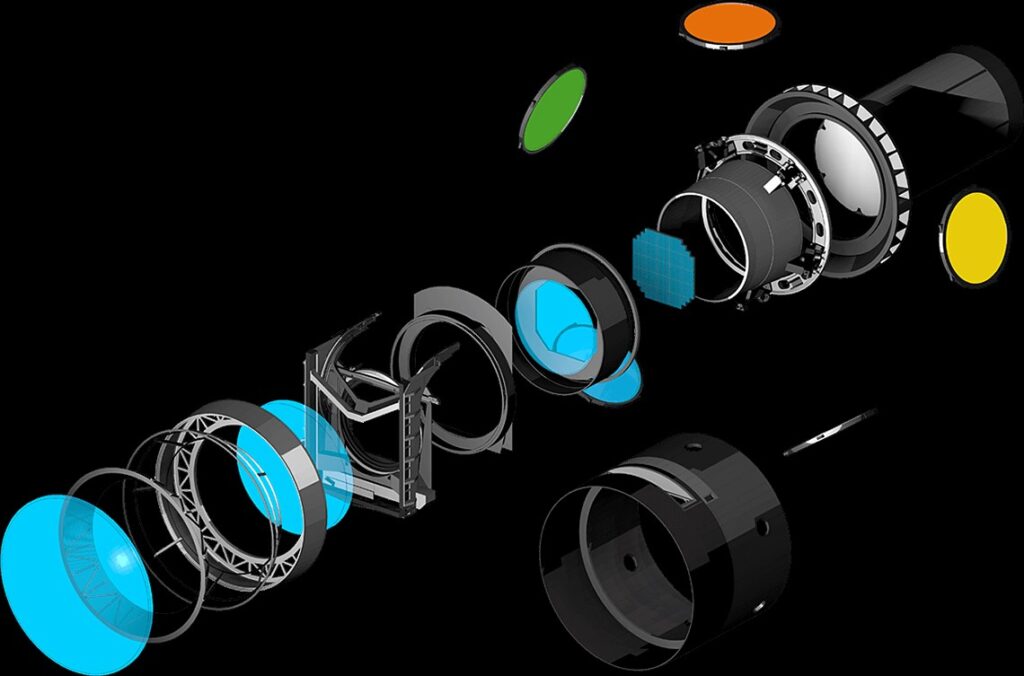
Parts That Make The Heart
A CCD or a Charge-Coupled Device is an integrated circuit containing an array of coupled capacitors. In CCD there is a photoactive region and a transmission region where the whole operation is carried out. An image is projected on the capacitor array through a lens. This causes each capacitor to accumulate an electric charge proportional to the light intensity at the location. A control circuit causes each capacitor to transfer its content to its neighbor and the last one dumps it into a charge amplifier which converts it into voltage. Repeating this process the entire contents of the array are converted into a sequence of voltages. This sequence is then sampled, digitalized, and stored. These are the basics of the operation.
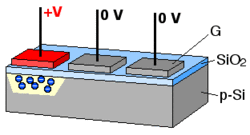
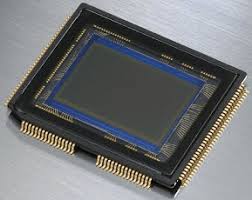
Coming back to the Mosaic, it is made of 189 CCDs and each CCD is assembled in a 3×3 unit called ‘Raft’. Each raft has a 144-megapixel count and costs about 3 million dollars each. With the heart in place, the three lenses that are used for the camera give it the size of an average SUV. The amount of area that can be captured in one shot is equivalent to 40 full moons giving it a very wide Field of View.
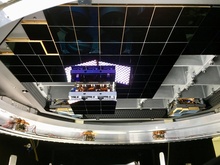
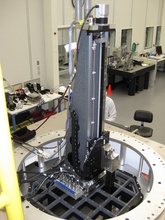
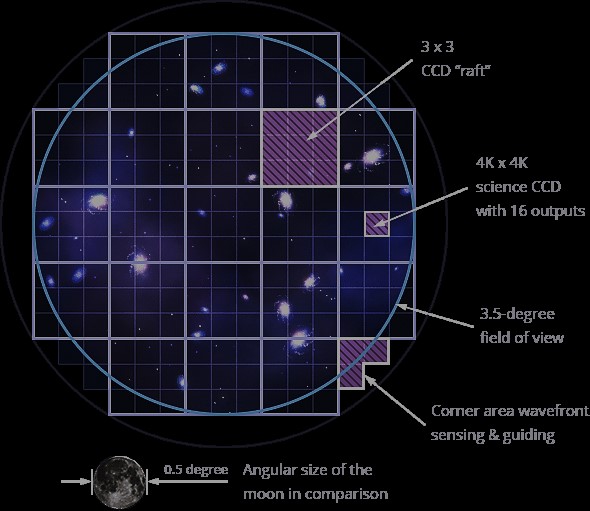
The wavelength range that LSST will focus on is 320-1500 nm ie. near-ultraviolet to near-infrared region. As we all know that the Universe is expanding, the light coming from distant galaxies often becomes red-shifted. Due to this apparent shift, the age of the galaxy often comes out to be a bizarre number. Also, the light that enters our atmosphere contains different colors. Many times red refracts differently than blue light and on focusing they create a blurry image. To tackle these problems, LSST uses a combination of 5 different filters to process the incoming light. Each filter can be swapped automatically based on the wavelength of incoming light.

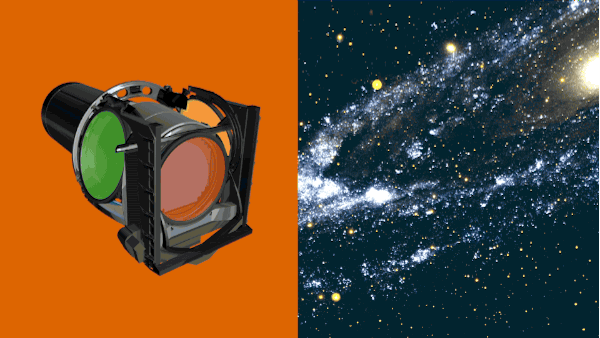
Together these ‘Parts of the Heart’ work in synchronization to create the most perfect image of the vivid night sky.
The Holy Grail of LSST
The goal to construct such a high-resolution camera is to search for answers to the most natural and perplexing questions of Astronomy that are beyond our understanding. LSST will mainly look into advancing our knowledge of Dark matter, Dark energy (that make up 95% of the universe), the formation of the Milky Way, and potentially perilous asteroids.
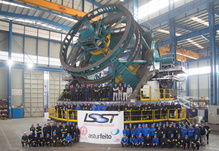
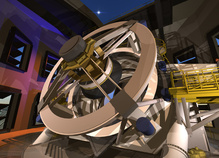
LSST or the “Large Synoptic Survey Telescope” will scan the southern sky every 30 seconds for the next 10 years. It will scan the entire visible sky twice a week, visiting the same patch of sky at least 1000 times during the survey. It will take nearly 3.2 gigapixels 1000 images every night, that’s 15TB of data per night. With so overwhelming numbers, they also decided to build an underground data facility that would allow them to analyze these images. And for the very first time, a Telescope is going to explore more galaxies than people on Earth. LSST is going to catalog 37 billion galaxies during its 10-year survey.
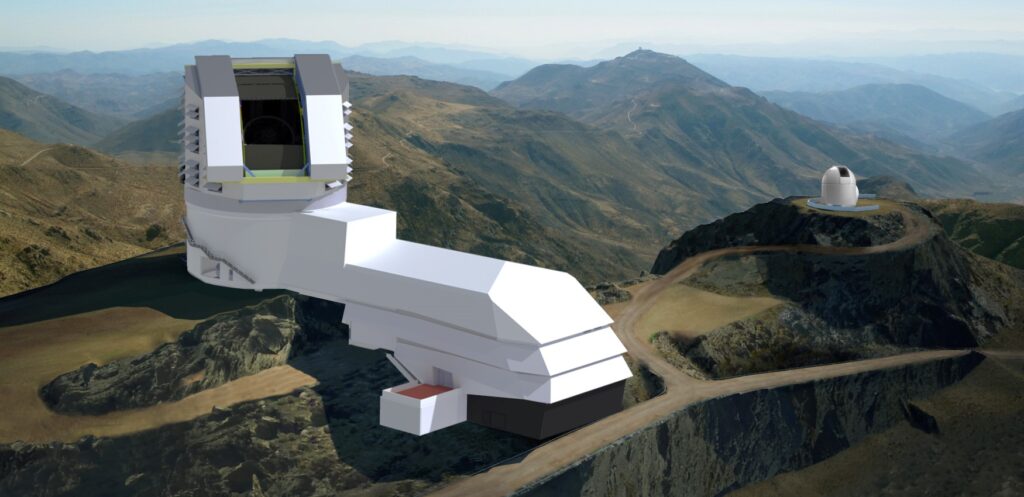
The pandemic has thrown the whole schedule off-track but the team is persistent and optimistic. Their target operational deadline is 2022. With this remarkable and cutting edge technology, scientists are challenging their understanding by proving themselves wrong and catch the universe in action.
“Amid the vast darkness that veils the brightest of objects, the dimmest light of the Universe impels man to denounce his intellection of the Cosmos.”
RDX


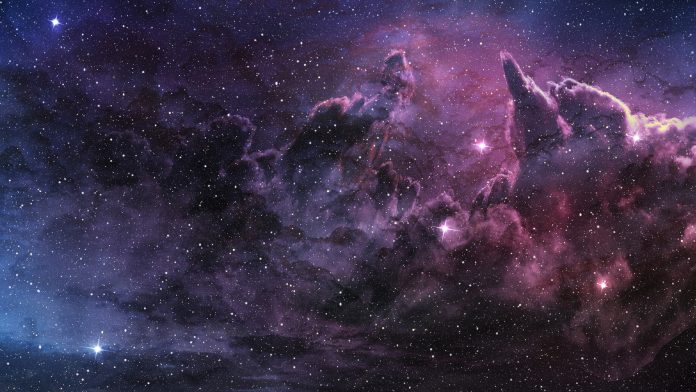

It’s nearly impossible to find knowledgeable people on this topic, however, you sound
like you know what you’re talking about! Thanks
Thanks for ones marvelous posting! I seriously enjoyed reading
it, you will be a great author.I will make certain to bookmark your blog and will eventually come back later on. I want
to encourage you continue your great posts, have a
nice evening!
Lovely article and specially that filter changing mechanism really astonished me as to how the images change.
Keep it up my Boy 👍👍👍
Thank you, sir! Indeed the mechanism is very nice.
Nice one
Nice ending
I’m glad you like it!
Too good an article. The finishing quote is lit af!!
Thanks man!